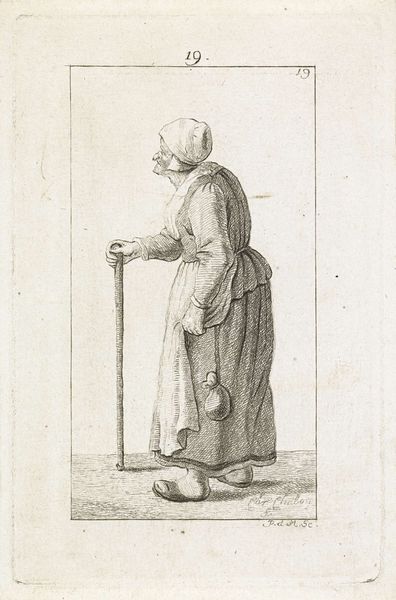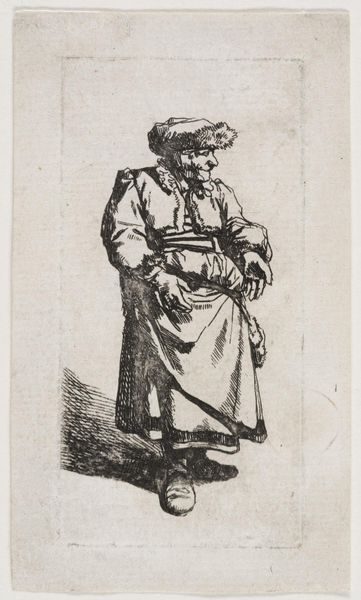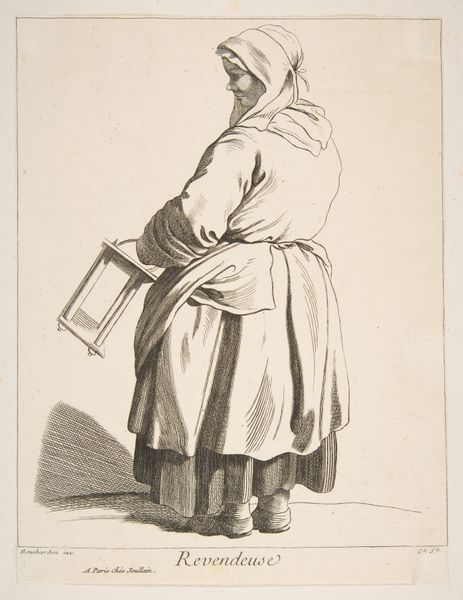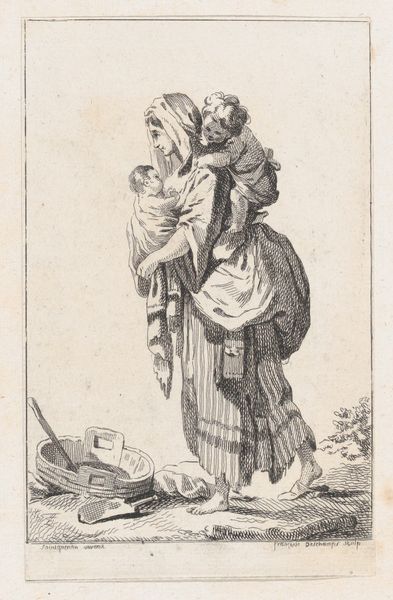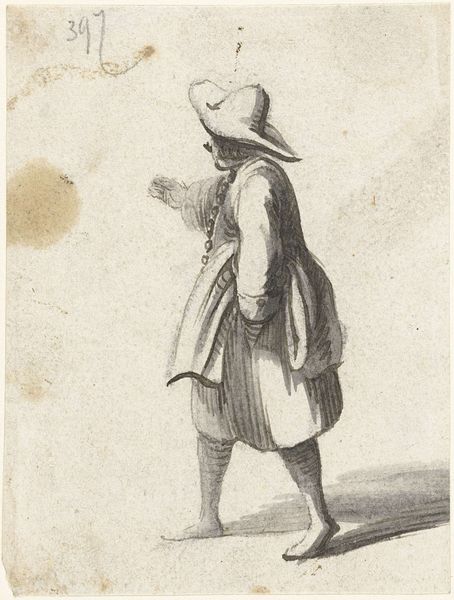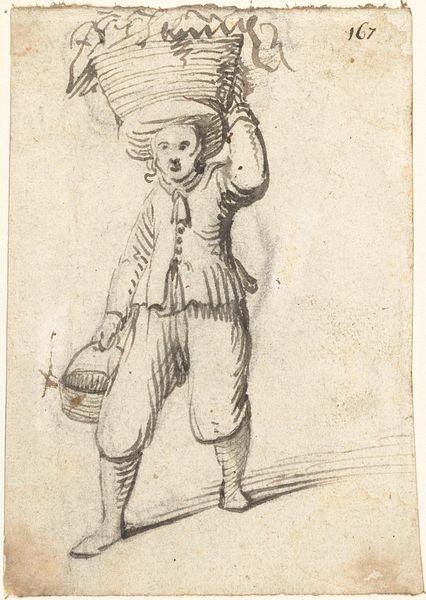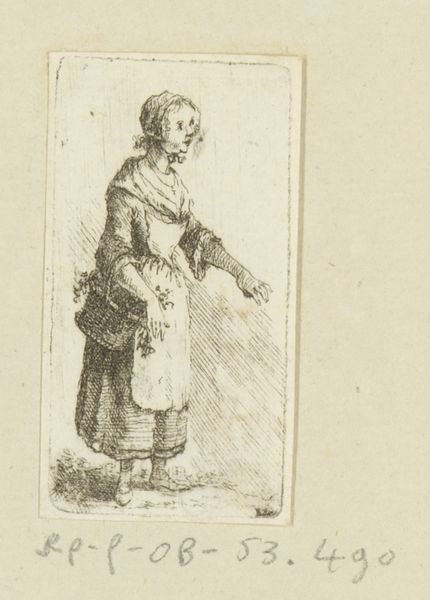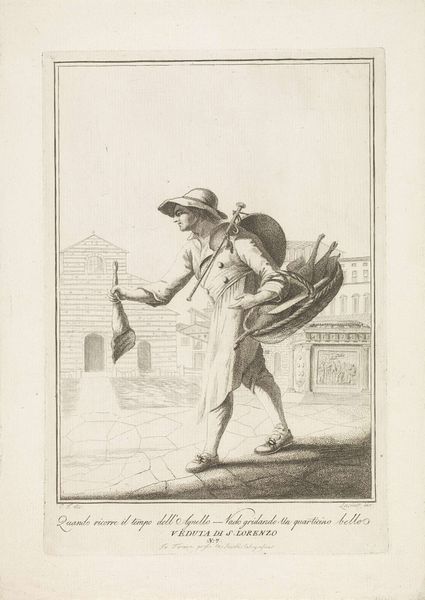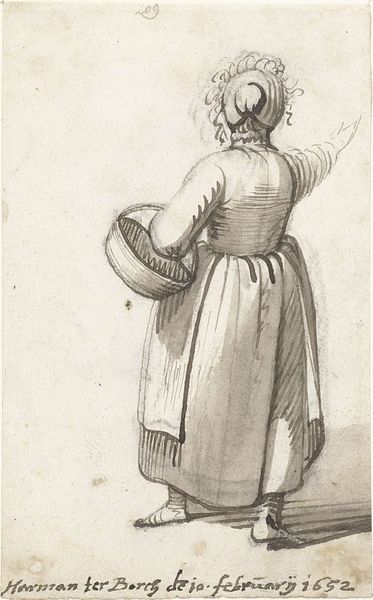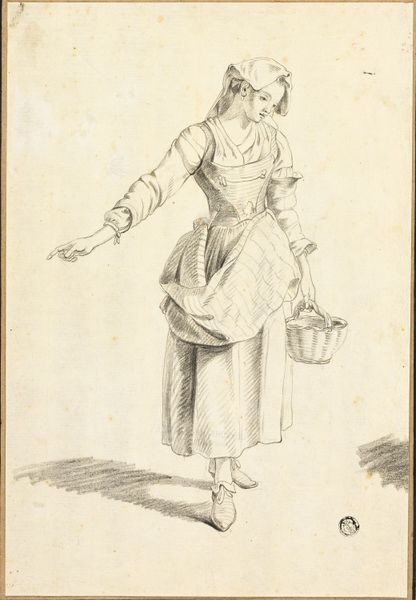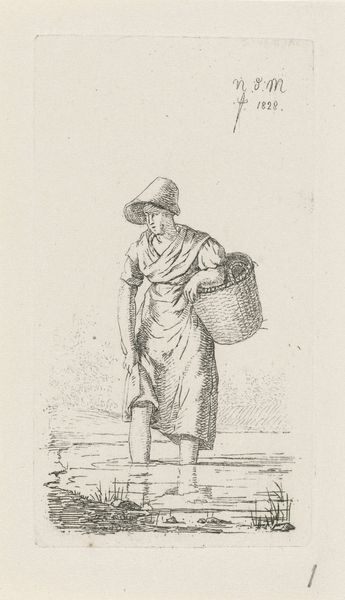
etching
#
portrait
#
etching
#
figuration
#
romanticism
Dimensions: height 70 mm, width 50 mm
Copyright: Rijks Museum: Open Domain
Curator: Let's consider "Girl with Outstretched Arm", an etching dating from 1803 to 1842, created by Anthonie Willem Hendrik Nolthenius de Man. It has a rather tentative feel, wouldn't you agree? Editor: Yes, a certain fragility comes through. The rough lines give it an unfinished, ephemeral quality, as though this woman could vanish at any moment. There's a poignancy to her vulnerability. Who do you think she might have been? Curator: Looking at the lines themselves, you'll note the distinct quality conferred by the etching process. It's interesting how Nolthenius de Man manages to get so much tonal variation from such limited means. And the composition is masterful: observe how her arm and posture create an invisible diagonal, dividing and energizing the plane of the print. Editor: While the diagonal you point out undeniably creates visual tension, I see in her stance an assertion of personhood. I wonder about her place in Dutch society at that time. The slight Romantic aesthetic to this figuration contrasts with what must have been an utterly pragmatic existence for a woman of her status. What stories could she tell? Curator: Undoubtedly many stories! Focusing on formal technique, the work clearly exemplifies a particular engagement with visual strategies. Notice how the stark contrast amplifies the feeling of isolation. And consider, too, the economical, yet descriptive quality of the line work – how it models the shape of the figure. Editor: Isolation, yes. But I also think it evokes resilience. Think of all the unseen women who toiled in relative anonymity throughout history. Perhaps this print grants her a visibility she would never have otherwise possessed. In that sense, art serves as a kind of witness and testament. Curator: An insightful reading! From my point of view, I am most intrigued by the print's capacity to compress a remarkable amount of pictorial information into a tightly controlled network of marks. The beauty, I suppose, arises in part through that constraint. Editor: Ultimately, perhaps, it's this very tension between the subject's possible lived experience and the aesthetic constraints of the artist’s rendering that allows the image to continue resonating today.
Comments
No comments
Be the first to comment and join the conversation on the ultimate creative platform.
